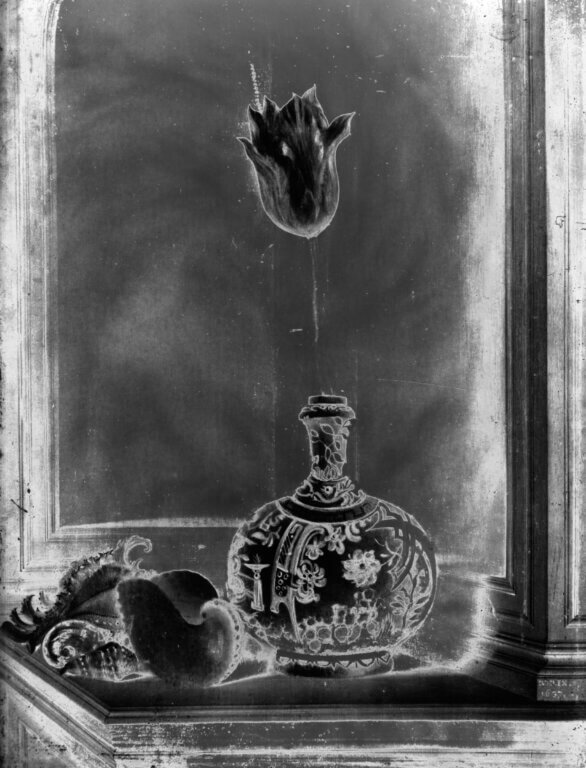Huis Marseille will be presenting Spolia, the first institutional solo exhibition in the Netherlands of the American artist Lisa Oppenheim. The exhibition opens on March 16 and runs through June 16 2024. At a time when considerable attention is being given to Nazi looted art, Oppenheim focuses both on art looted from Dutch collections and Dutch art in looted collections. She specifically examines artworks and objects that are most likely missing or destroyed. Oppenheim uses a stratified approach to reveal what presence the disappeared art still has in the world around us.
Art looted from the Netherlands, Dutch art in looted collections
In Spolia, Oppenheim concentrates on supposed missing looted artworks and objects such as paintings and tapestries that were once owned by dealers and collectors of Jewish descent in the Netherlands as well as collections of Dutch art looted from Jewish families elsewhere. Through extensive archival research, Oppenheim discovered photographic records of plundered works. One of the archives she consulted was that of the well-known Amsterdam art dealer Jacques Goudstikker (1897-1940). Goudstikker and his family fled to the United Kingdom in 1940 by boat, however he tragically died on the journey. He was also forced to leave behind his gallery’s inventory which was usurped and exploited by Nazi occupiers and their accomplices. In another example of her research, Oppenheim discovered records and photographic documentation of artworks owned by the Amsterdam and Paris-based Hamburger family in the National Archives of Germany (Bundesarchiv). Oppenheim used this photographic documentation to produce new artworks, in her words, “reprocessing” the images in her darkroom using various techniques. In one such technique she uses fire to re-expose photographic prints and negatives. Typically thought of as a force of destruction, Oppenheim uses fire as a generative force, giving light to images of lost or destroyed artworks.
Visible Absence
The question that is often key to Oppenheim’s work is how to depict what no longer exists or is concealed. Her new work, based on primary document research, explores how the afterlives of Nazi looted art and objects extend through time. Spolia refers to both spoils of war and is an architectural term that describes how parts of buildings were taken as war booty to serve as the literal building blocks of new structures. Oppenheim applies this approach to the traces of Nazi looted art and objects, using what little remains as the building blocks of new artworks.
In the slide presentation Kakadu (‘Cockatoo’) the presence of a missing figurine is suggested through images of the moulds from the Meissen factory used to make it. As with a photographic negative, the mould is a negative space out of which any number of positives can be made. In the work Stola she creates photographs using a beaded silk shawl she purchased in a Paris flea market as a photographic negative. She was intrigued by how this decorative piece resembled a description of a looted silk stole in one of the archives she consulted. Looted artworks about which there is little or no documentation are transformed by Oppenheim into abstract images that reflect the viewer in the photographic space. Oppenheim positions herself between the reflection and absorption of light, as a vehicle through which images can travel through time and reshape themselves in the light and the chemistry of her darkroom.
Oppenheim organizes the exhibition spaces of Spolia primarily according to the families who originally possessed the looted objects. In this way Oppenheim tries to centre the exhibition around those who were persecuted during the Nazi regime. The gravity and magnitude of crimes committed during the Second World War continue to affect many aspects of contemporary life. From the many ongoing restitution claims to the untangling of often complex family histories, there is no part of society that does not grapple with this history. In the words of the American writer William Faulkner: ‘The past is never dead. It’s not even past.’
Biography
Lisa Oppenheim (born in New York in 1975) currently lives and works in New York. She received a BA from Brown University (1998), and an MFA from the Milton Avery Graduate School for the Arts at Bard College (2001). She attended the Whitney Independent Study Program in New York and the Rijksakademie van beeldende kunsten in Amsterdam. She has had solo exhibitions at the MCA in Denver (2018), MOCA Cleveland (2017), the FRAC Champagne-Ardenne in Reims (2015) and the Kunstverein in Hamburg (2014). Notable group exhibitions include: Woven Histories: Textile and Modern Abstraction, Los Angeles County Museum of Art (2023), Afterlives, The Jewish Museum, New York (2021) and Off the Record, Guggenheim Museum, New York (2021). Her work is held in, among others, the permanent collections of the Museum of Modern Art, New York, the Solomon R. Guggenheim Museum, New York, the J. Paul Getty Museum, Los Angeles, the Israel Museum, Jerusalem, the Centre Pompidou, Paris, the Stedelijk Museum Amsterdam and the Victoria & Albert Museum, London. A monograph of her work is scheduled for publication by Hatje Cantz in the spring of 2025 on the occasion of a solo exhibition planned at MUDAM in Luxembourg. She is represented by Tanya Bonakdar Gallery in New York and Los Angeles and The Approach in London.
Supplement De Groene Amsterdammer
For this exhibition, in collaboration with De Groene Amsterdammer and with the support of Goethe-Institut Amsterdam, a supplement has been produced on Nazi looted art and the work of Lisa Oppenheim. The supplement is available free of charge at the museum for the duration of the exhibition (while stock lasts, only available in Dutch).




